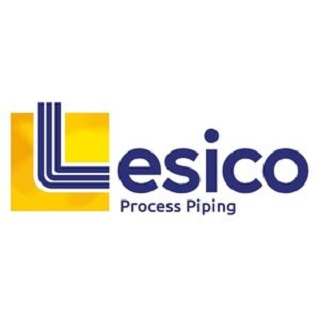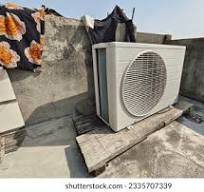Pipeline installation projects play a vital role in numerous industries, including oil and gas, water, and sewage management. Whether transporting crude oil, natural gas, or water, pipelines are crucial for efficient, safe, and large-scale resource distribution. However, these projects come with complex engineering requirements, logistical challenges, and environmental considerations that demand careful planning and execution. This blog will delve into the essential aspects of pipeline installation projects, covering the primary steps, challenges, and industry best practices.
1. Overview of Pipeline Installation Projects
Pipeline installation is the process of constructing and installing long-distance systems of pipes to transport resources like oil, gas, or water. Projects can range from short-distance connections to extensive cross-country networks. Due to the scale and impact of these projects, they often require substantial investment, compliance with environmental regulations, and attention to public and worker safety.
2. Types of Pipelines and Their Applications
Pipelines can vary greatly in type, depending on the materials they transport and the environments they traverse. The main categories include:
- Oil Pipelines: Transport crude oil from production sites to refineries or distribution points.
- Gas Pipelines: Used for natural gas distribution, often requiring specialized infrastructure for safety.
- Water Pipelines: Transport water for residential, industrial, and agricultural use.
- Wastewater and Sewage Pipelines: Carry wastewater and sewage to treatment facilities.
- Industrial Pipelines: Used within facilities for specific industrial processes, including chemical transport.
Each type of pipeline installation project has unique considerations for materials, installation techniques, and maintenance practices.
3. Key Phases of Pipeline Installation Projects
Successful pipeline installation projects follow a structured process with distinct phases, each essential for maintaining efficiency, safety, and regulatory compliance.
a. Planning and Design
- Route Selection: Choosing the optimal route involves analyzing environmental impact, geography, land ownership, and potential hazards. Routes should balance cost-effectiveness with safety and environmental sensitivity.
- Environmental and Social Impact Assessments: Comprehensive assessments are required to understand the potential impact on ecosystems, wildlife, and communities.
- Engineering Design: The pipeline’s diameter, thickness, material, and other specifications are determined in this phase, along with technical features like pumps, valves, and monitoring systems.
b. Permitting and Regulatory Compliance
- Obtaining Permits: Regulatory approval is mandatory, especially for projects crossing state or national borders. This includes permits for land use, construction, and environmental protection.
- Community Engagement: Engaging local communities affected by the pipeline installation is essential to address concerns, inform them about the project, and reduce opposition.
c. Material Procurement
- Pipe Selection and Sourcing: Choosing the correct type and grade of pipe material is crucial, as it influences the pipeline’s durability, safety, and maintenance requirements.
- Logistics and Transportation: Given the large size and weight of pipeline materials, transportation and storage must be managed efficiently to minimize delays.
d. Construction and Installation
- Land Preparation and Excavation: The pipeline path must be cleared and leveled, and trenches dug for below-ground installations.
- Welding and Jointing: Pipes are welded or joined in sections along the length of the route, ensuring leak-proof connections.
- Testing: Pressure testing, often called hydrostatic testing, is conducted to verify the pipeline’s integrity before it goes live.
- Environmental Safeguards: During construction, erosion control and water quality protection measures are put in place.
e. Inspection, Commissioning, and Maintenance
- Initial Inspection and Quality Assurance: After construction, quality inspections ensure that the pipeline meets regulatory and safety standards.
- Commissioning: The pipeline is brought into operation gradually, with pressure and flow rates increased to their intended levels.
- Maintenance and Monitoring: Once operational, pipelines require ongoing inspection, leak detection, and periodic maintenance.
4. Challenges in Pipeline Installation Projects
Pipeline installation projects encounter several challenges that must be managed to avoid costly delays and safety risks.
a. Environmental Impact and Regulations
Pipelines can disrupt ecosystems, water resources, and wildlife. Strict environmental regulations are imposed to mitigate these effects, but they can sometimes cause delays in project timelines.
b. Geographical Challenges
Different terrains – such as mountains, rivers, or densely populated areas – require tailored engineering solutions. Pipelines in mountainous regions may require tunneling, while those in wetlands must be designed to withstand waterlogged conditions.
c. Community and Landowner Concerns
Pipeline projects often intersect private and community-owned land, leading to disputes over land use and compensation. Addressing community concerns and ensuring fair compensation can be challenging but is essential for project success.
d. Safety Risks
Safety is a top priority due to the hazardous nature of some transported materials. Ensuring the safety of both workers and surrounding communities involves strict adherence to safety protocols and regular monitoring.
e. Technological and Logistical Constraints
Modern pipelines often require advanced technology, such as automated monitoring systems and corrosion-resistant materials, to ensure durability. Managing the logistics of transporting and installing such materials, often across long distances, adds another layer of complexity.
5. Best Practices for Pipeline Installation Projects
a. Implement Robust Project Management
Effective project management is vital to streamline workflows, coordinate across multiple teams, and address unexpected challenges. This includes maintaining a project timeline, managing costs, and using performance metrics to monitor progress.
b. Use Advanced Technology
Investing in technology like Geographic Information System (GIS) mapping, pipeline monitoring sensors, and predictive maintenance software can enhance efficiency and safety. GIS mapping is especially useful in route selection and environmental assessment, while sensors allow for real-time monitoring of pipeline conditions.
c. Prioritize Environmental Stewardship
To minimize environmental damage, adopt eco-friendly construction practices, such as using erosion control measures and avoiding sensitive habitats where possible. Compliance with environmental regulations not only reduces legal risks but also builds public trust.
d. Engage with Stakeholders
Open communication with local communities, regulatory bodies, and stakeholders can improve project transparency and cooperation. Holding informational meetings, addressing concerns, and offering fair compensation are key strategies for gaining community support.
e. Ensure Worker and Public Safety
Implement strict safety protocols, such as using protective gear, conducting regular safety drills, and establishing emergency response plans. Continuous safety training for workers helps reduce risks during construction and maintenance.
6. The Role of Innovation in Pipeline Installation Projects
The future of pipeline installation lies in technological innovation. Emerging trends include:
- Automated and Remote Inspection: Drones and robots can inspect pipelines in hard-to-reach areas, improving safety and efficiency.
- Advanced Materials: New materials, like composite and corrosion-resistant coatings, extend the lifespan of pipelines and reduce maintenance costs.
- Leak Detection Technology: Digital sensors can detect leaks early, preventing costly repairs and environmental damage.
- Predictive Maintenance: Artificial intelligence and machine learning are being used to predict maintenance needs based on data from pipeline monitoring systems.
7. Case Studies of Successful Pipeline Installation Projects
a. Keystone Pipeline System (USA)
The Keystone Pipeline, spanning over 3,000 miles, is a large-scale project in North America designed to transport crude oil from Canada to the United States. The project’s success relied on advanced environmental assessments, community engagement, and rigorous safety protocols.
b. Turkmenistan-Afghanistan-Pakistan-India (TAPI) Pipeline
The TAPI pipeline project, aimed at connecting energy resources across countries in Central and South Asia, demonstrates the importance of international collaboration in overcoming geographical and political challenges.
c. Trans-Anatolian Natural Gas Pipeline (TANAP)
The TANAP pipeline, running from Turkey to Europe, provides an example of environmentally conscious construction practices. Through community engagement and a focus on minimizing environmental disruption, the project was able to proceed smoothly.
8. Conclusion
Pipeline installation projects are complex undertakings with significant economic, environmental, and social implications. Each stage, from planning and design to construction and maintenance, demands meticulous attention to detail, safety, and sustainability. By following industry best practices, utilizing advanced technologies, and engaging with stakeholders, companies can navigate challenges and successfully complete pipeline installation projects.
Pipeline infrastructure remains an essential component of global resource distribution, and as the industry continues to innovate, we can expect even greater efficiency and safety in future projects. For companies, focusing on sustainable practices and staying updated on regulatory requirements will be key to thriving in this dynamic field.














